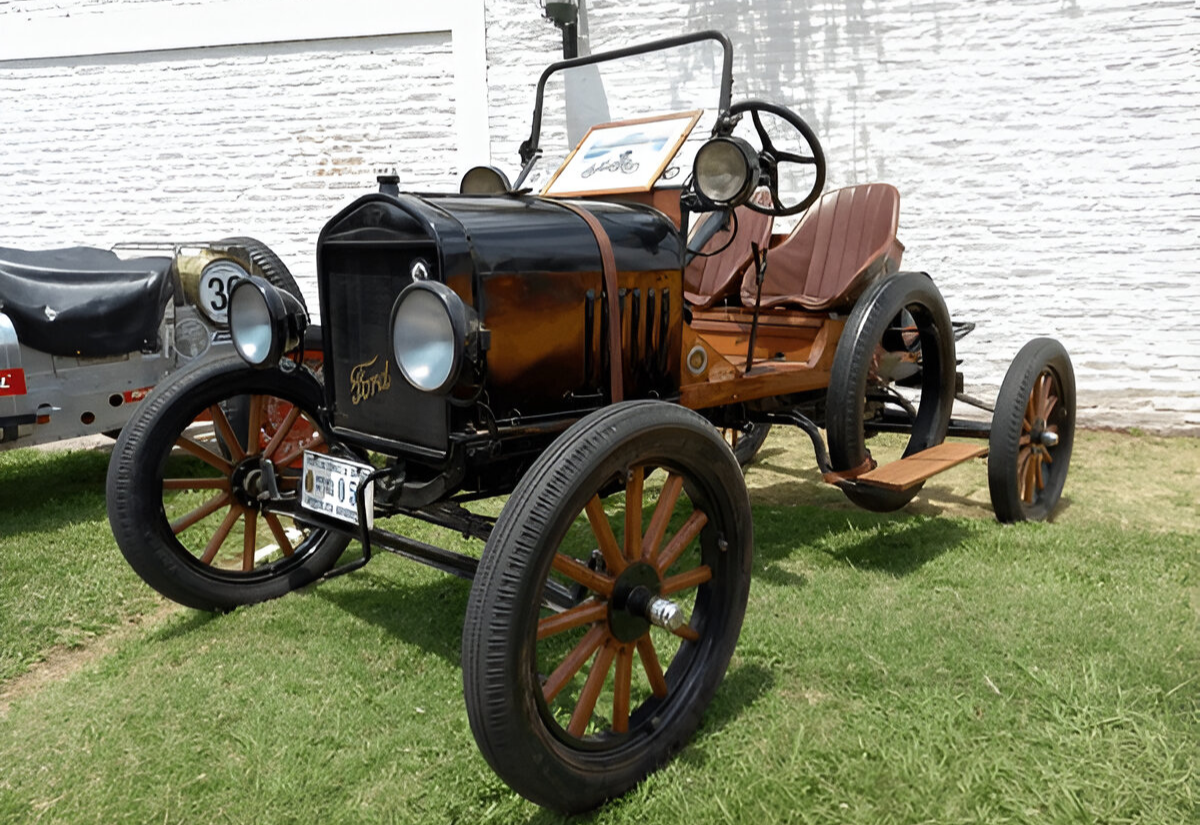Introduction
The Ford Model A Roadster is more than just a car—it’s a timeless symbol of America’s early motoring era. Produced between 1927 and 1931, this open-top classic represented Ford’s leap forward after the legendary Model T. With its stylish design, reliable engineering, and wide appeal, the Model A Roadster quickly became a favorite among drivers who wanted both practicality and flair. Today, it continues to capture the imagination of collectors, enthusiasts, and history lovers as one of the most iconic vintage cars ever built.
The Origins of the Ford Model A Roadster
When the Ford Model T came to an end in 1927, it left behind a legacy as the car that put America on wheels. But by that time, the Model T’s design and technology were showing their age. Drivers wanted more comfort, style, and modern features—things the simple and rugged Model T could no longer provide.
Henry Ford and his team responded with the Ford Model A, a car that marked a new chapter in automotive history. Among its many body styles, the Roadster stood out as one of the most eye-catching. With its open-top design and sporty proportions, it blended practicality with a sense of freedom that appealed to a wide range of drivers.
Ford’s vision was clear: create a car that was affordable, reliable, and modern, yet stylish enough to attract a new generation of motorists. The Model A Roadster delivered on that promise, quickly becoming a favorite for its combination of everyday usability and vintage charm.
Design and Styling That Defined the Era
The Ford Model A Roadster captured the spirit of late-1920s design with a look that was both simple and elegant. Its open-top body gave it a sporty, adventurous character, while the flowing fenders, upright grille, and sweeping lines reflected the classic styling of the era. Drivers could fold down the soft canvas roof on sunny days, making it perfect for leisurely weekend drives or everyday use with a touch of flair.
Inside, the Roadster stayed true to Ford’s philosophy of functional simplicity. The dashboard featured basic gauges, and the cabin was designed with practicality in mind rather than luxury. Yet, the layout was driver-focused, offering clear visibility, easy access to controls, and a comfortable seating position. This balance of style and usability helped the Model A Roadster appeal to everyday drivers as well as those who wanted a car with personality.
Performance and Engineering Highlights
Under the hood, the Ford Model A Roadster carried a 201-cubic-inch (3.3-liter) inline four-cylinder engine, capable of producing around 40 horsepower. While that number may seem modest by modern standards, it was a big improvement over the Model T’s 20 horsepower. This upgrade gave the Roadster a more confident driving experience, with smoother acceleration and the ability to reach speeds of up to 65 miles per hour—plenty for the roads of the late 1920s and early 1930s.
One of the biggest advancements was the introduction of a three-speed sliding gear transmission, replacing the more basic planetary gear system found in the Model T. This made the Roadster easier to drive and more appealing to a broader audience, including new motorists. Hydraulic shock absorbers, improved brakes, and a stronger frame also contributed to a ride that was more comfortable and stable than its predecessor.
These engineering improvements didn’t just make the Model A Roadster more enjoyable to drive—they signaled Ford’s shift toward modern automotive standards, blending reliability with performance in a way that set the stage for future generations of cars.
Popularity and Cultural Impact
From the moment it rolled onto the streets, the Ford Model A Roadster became a symbol of American motoring freedom. Its affordable price made it accessible to everyday families, while its sporty design gave it an aspirational edge. Drivers loved the feeling of open-air travel, and the Roadster quickly earned a reputation as a car that blended practicality with a touch of excitement.
Over the decades, the Model A Roadster has held a special place in car culture and media. It often appears in films, vintage photography, and period reenactments as a representation of the Jazz Age and the optimism of the late 1920s. Car clubs and enthusiast communities still celebrate it at shows and rallies, where restored examples highlight its lasting charm.
The Roadster’s influence also extends into the world of hot rodding and customization. Beginning in the postwar years, many enthusiasts saw the Model A Roadster as the perfect canvas for speed and creativity, cementing its legacy not just as a factory classic but also as a cultural icon of individuality.
Collectibility and Value Today
For vintage car enthusiasts, the Ford Model A Roadster remains one of the most desirable classics from the pre-war era. Collectors seek it out not only for its historical significance but also for its timeless design and the sense of nostalgia it carries. As one of the more stylish body styles of the Model A lineup, the Roadster often commands higher interest compared to sedans or coupes.
Several factors influence its market value today. Originality plays a major role—cars that retain authentic parts and factory details are often worth more. Condition is another key factor: fully restored Roadsters in pristine shape can fetch impressive prices at auctions, while unrestored examples may appeal to buyers who enjoy the challenge of bringing history back to life. Rarity also adds to its appeal, as certain trim levels or unique features can make a particular Roadster stand out to collectors.
Restoration and Maintenance
Restoring a Ford Model A Roadster can be rewarding, but it comes with its challenges. Sourcing authentic parts is often one of the biggest hurdles, as original components grow scarcer with time. Mechanical work can be relatively straightforward thanks to the car’s simple design, but bodywork and upholstery restoration require careful attention to detail to preserve its vintage character.
To maintain authenticity, many owners follow factory specifications and rely on historical references to ensure accurate paint colors, trim materials, and hardware. Regular upkeep—such as proper storage, routine lubrication, and careful driving—helps keep the Roadster both functional and historically correct. These efforts not only preserve the car’s value but also keep its legacy alive for future generations.
Conclusion
The Ford Model A Roadster remains more than just a vintage automobile—it’s a living piece of American history. From its debut as Ford’s stylish successor to the Model T, to its enduring role in car culture and collector circles, the Roadster continues to embody the charm and freedom of early motoring. Whether admired at classic car shows, preserved in private collections, or remembered for its role in shaping automotive design, the Model A Roadster stands as a timeless reminder of an era when cars were built to be both practical and full of character.
FAQ
Q1: What years was the Ford Model A Roadster produced?
The Ford Model A Roadster was produced between 1927 and 1931, during the same production run as the rest of the Model A lineup.
Q2: How much is a Ford Model A Roadster worth today?
Values can vary widely depending on condition, originality, and restoration quality. On average, a Model A Roadster can range from $15,000 for a project car to $40,000 or more for a fully restored example. Rare trims or exceptionally preserved cars may command even higher prices.
Q3: What makes the Ford Model A Roadster different from other Model A body styles?
Unlike sedans or coupes, the Roadster featured an open-top design with a folding soft roof. Its sporty, lightweight look and emphasis on open-air driving made it stand out as one of the most stylish and desirable body styles of the Model A series.
Q4: Is the Ford Model A Roadster still roadworthy for modern driving?
Yes—many examples are still driven today, though they require regular maintenance and careful handling. While the Model A Roadster can be enjoyed on modern roads, it lacks features like power steering, disc brakes, and modern safety systems, so it’s best suited for relaxed drives, shows, and parades.

